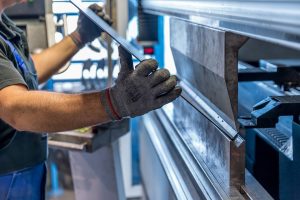
Defined as an alloy of iron and carbon, steel has become one of the world’s most important materials. It’s used to make everything from washing machines and dryers to bridges, airplanes, cars, buildings and more. Statistics show, in fact, that over 1.7 million tons of steel are produced each year. While there are different types of steelmaking processes, however, the two most common include primary and secondary.
What Is Primary Steelmaking?
Primary steelmaking involves the use of a blower to force oxygen through molten iron, thereby lowering its carbon content while subsequently converting it into steel. Also known as basic oxygen steelmaking, it was invented in the mid 1900s by Swiss engineer Robert Durrer. With the help of his team, Durrer pioneered primary steelmaking in 1948. He found that by forcing oxygen through molten iron, the carbon content of the iron dropped. Therefore, Durrer was able to easily create steel from raw pig iron using the primary steelmaking process.
Research shows that forcing oxygen through molten iron reduces its carbon content by approximately 0.5% to 1.5%. The oxygen triggers a chemical reaction known as oxidation that lowers the carbon content of the iron. As the carbon content drops, the iron essentially turns to steel.
What Is Secondary Steelmaking?
Secondary steelmaking isn’t as popular as its primary counterpart. Nonetheless, it still ranks as one of the most common ways to produce steel. What is secondary steelmaking exactly? Also known as electric arc furnace steelmaking, secondary steelmaking lives up to its namesake by relying on an electric arc to melt scrap iron. After the scrap iron has been melted, it’s mixed with carbon and converted into steel.
With secondary steelmaking, a refractory-lined vessel is used as the furnace. The furnace is also equipped with a roof that insulates the scrap iron as it’s heated. The defining characteristic of secondary steelmaking, however, is its use of an electric arc. Primary steelmaking uses a blower to force oxygen through molten iron, whereas secondary steelmaking is characterized by the use of an electric arc. The electric arc is able to heat up the scrap iron until it achieves a molten state. Furthermore, it’s important to note that primary steelmaking doesn’t dissolve the oxygen. It simply blows oxygen through the molten iron.
Although it’s most commonly performed with scrap iron, secondary steelmaking can produce large yields of steel. According to Wikipedia, secondary steelmaking can produce about 100 tons of steel every 40 to 50 minutes. Primary steelmaking, of course, can also produce large yields.
